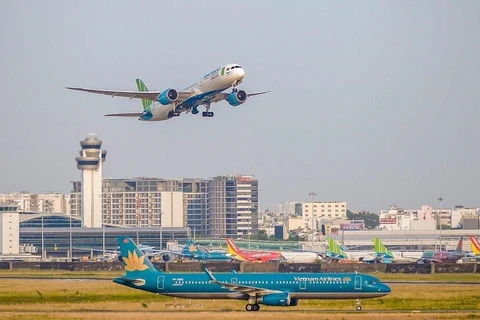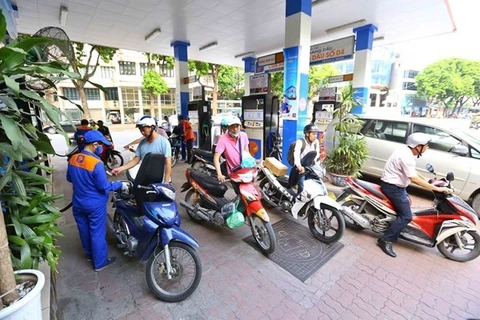Hanoi (VNA) – With current supply capacity, the local shortage of petroleum will be soon resolved, and the supply and demand for the domestic market will be stable, according to Tran Duy Dong, Director of the Domestic Market Department, Ministry of Industry and Trade (MoIT).
Fuel prices have reached a new record high earlier this week, with both retail prices of RON95 bio-fuel and E5RON92 rising by nearly 1,000 VND to a maximum of 26,287 VND (1.15 USD) per litre and 25,532 VND per litre, respectively.
It was the fourth consecutive increase of petrol prices in 2022 and the fifth in a row, with total increase of nearly 3,500 VND per litre.
The fuel price rise matched the market expectation and was in line with global oil prices.
The International Energy Agency raised its 2022 demand forecast and expects global demand to expand by 3.2 million barrels per day (bpd) this year to reach an all-time record 100.6 million bpd.
In a note to its clients, Goldman Sachs analysts predicted Brent crude to top 100 USD per barrel in the third quarter.
In the domestic market, the petrol price grew around 50% since February 2021 and 9% this year.
Filling fuel shortage
In addition to the global impact, according to insiders, reduced production by Vietnam’s largest refinery Nghi Son was partly blamed on costlier fuel prices and fuel shortages in some southern localities since early this year.
The Thanh Hoa-based refinery has cut production to just around 55 – 60% due to cash shortage. Deliveries to domestic retailers shanked about 43% this month. In March, it is highly likely that the plant can only fulfill some 80% of the orders.
The plant will run at 100% capacity from mid-March until May but has no plan to make any delivery in April and May, its managers announced at a meeting with the MoIT earlier this month.
Nghi Son oil refinery has a capacity of 200,000 crude oil barrels a day, or 10 million tonnes a year, which is twice that of Dung Quat Oil Refinery in Quang Ngai. The two plants supply 75% of domestic demand while the other 25% comes from imports.
However, according to industry insiders, Nghi Son refinery could not immediately restore 100 per cent of its capacity in a short time as disbursing money and then importing crude oil also take time, but the situation will improve compared to the past few weeks.
Vietnam’s other refinery Binh Son which manages the Dung Quat oil refinery has operating 3% above capacity since the end of January to 5% since February 7 to offset Nghi Son’s reduced production. Meanwhile, the Government has requested the authority to increase imports to supply domestic demand.
According to the MoIT, inventories at retailers totalled around 1.3 million cu.m in early February. Retailers are expected to purchase a total of 2.39 million cu.m of oil and petrol, including 1.4 million cu.m sourced from imports, to meet the domestic demand.
Stablising fuel prices
The MoIT has requested local market watchdogs to increase inspection of fuel retailers to prevent speculation. Three groups of inspectors were established last week to monitor how retailers observe the industry regulations.
As agreed by the MoIT and the Ministry of Finance, the national petrol price stablisation fund has been used since last month to deal with the price hikes, with subsidies ranging from 200 VND – 400 VND, according Director of the Domestic Market Department Dong.
If the fuel prices soar too high, for example, global crude oil exceeds 100 USD per barrel, the MoIT will for sure take other financial tools, like tariff and fees, into consideration to slow down the trend, Dong said./.
Box: Data from the General Department of Customs showed that petroleum imports of key traders reached 803,000 cu.m in the first 15 days of this month, an increase of more than 60% compared to normal. About 600,000 cu.m will be imported in the last days of this month./.
























